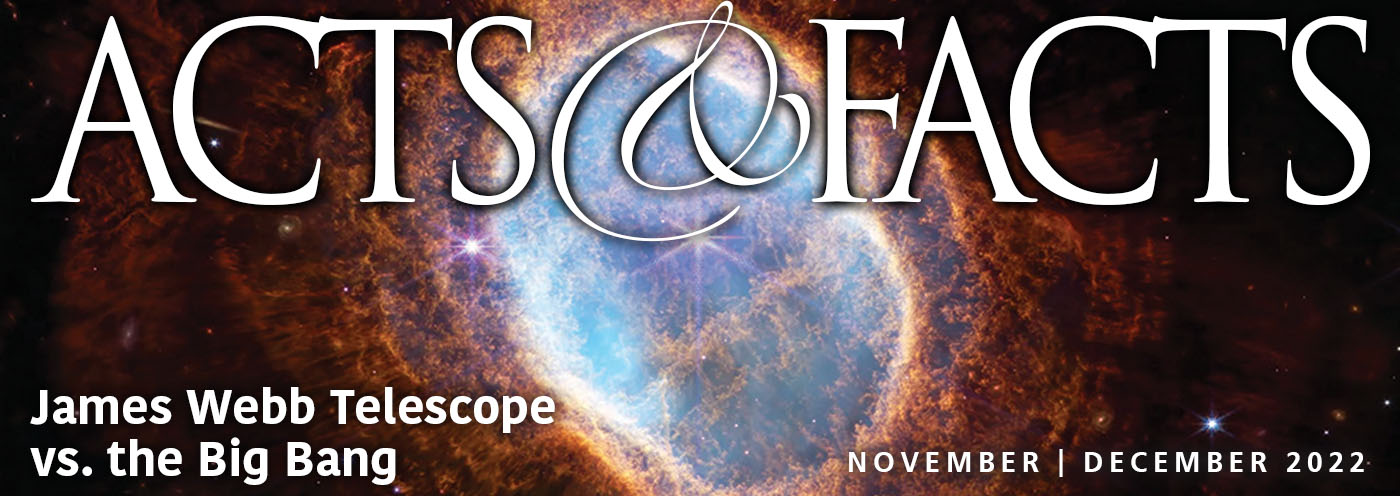Jurassic mammals made headlines recently, as Chinese paleontologists described in the journal Nature six tiny skeletons comprising three new species.1 The squirrel-like fossils break with the long-held idea that most so-called "dinosaur-era" mammals resembled shrews. These newfound mammals look like they lived in trees—not underground like shrews. Do the new fossils help evolutionists clarify their story for the origin of mammals, or do they crank more twists into evolution's troubled saga?
An American Museum of Natural History press release reads, "The animals, which researchers have placed in a new group, or clade, called Euharamiyida, likely looked similar to small squirrels."2 If they looked like squirrels, maybe they were squirrels. And if these were simply ancient varieties within the squirrel kind that went extinct, then researchers wouldn't need to invent a new group or clade name.
Similarly, cave bears once lived in Europe, but today only their living relatives, like the grizzly, polar, and black bear varieties, still roam the globe.
These new squirrels call to mind the Chinese fossil mammal with a dinosaur in its stomach that evolutionists named Repenomamus robustus. The fossil looked like a Tasmanian devil, so why did they give it a different name?3
This description of what are essentially three Jurassic squirrels throws a big twist into the evolutionary tale of mammal origins. Shouldn't transitional forms occur this far down in rock layers instead of fully formed mammals that easily identify with modern varieties? Plus, why have squirrels not evolved into some other mammal after so many millions of supposed years? These fossils clearly show that squirrels have always been squirrels.
And as often occurs with new fossil finds, these evolutionary study authors struggled to interpret these three new mammal species' descriptions in terms of what kind of mammal may have evolved first, which specimens should be grouped together to summarize evolutionary ancestry, or which specific kinds were the ancestors and which were the descendants.
The reason why fossil forms fit so poorly into evolutionary paradigms is because they simply do not display the expected connections between supposedly evolving creatures. Instead, each mammal occurs with a fully functional, interlocking, and integrated suite of features.
As a result, one scientist may construct an evolutionary chart of mammalian ancestry based on an inferred progression of fossil mammal teeth, but that family pedigree would likely ignore other key body features found only in certain mammals. Attempts to "fix it" often assume, against all odds, that whatever features do not follow the pedigree must have miraculously evolved multiple times. What a mess.4
Sometimes they build a new chart focused on different body features, but that in turn minces the original tooth-based chart. For example, the Nature study authors wrote a new mammal evolution chart partly based on these three newly named species, but admitted that their chart "suggests that the detachment of the postdentary bones evolved twice independently during the early evolution of mammals."1
What scientific observation distinguishes between the hypotheses that postdentary bones evolved their detached position twice, versus that God created them detached in some mammals, and attached in others as He saw fit?
These new squirrel-like mammals from China only confirm what one of the most authoritative evolutionary textbooks said about this subject, "The interrelationships of these orders of primitive mammals have been and still are a subject of much dispute."5
Evolutionary scenarios often conflict with one another, and new fossils typically intensify these longstanding evolutionary disputes. These Jurassic squirrel-like fossil descriptions are no exception, and they confirm that mammal kinds were designed from the start.
References
- Bi, S., Y. Wang, J. Guan, X. Sheng, and J. Meng. Three new Jurassic euharamiyidan species reinforce early divergence of mammals. Nature. Published online September 10, 2014, DOI:10.1038/nature13718.
- Snyder, K. Researchers Discover Three Extinct Squirrel-like Species. American Museum of Natural History Press Release # 78. Posted on hmnh.org September 10, 2014, accessed September 23, 2014.
- Thomas, B. 2013. The Details Are in the 'Devil.' Acts & Facts. 42 (3): 18.
- See also Thomas, B. 2013. The Unpredictable Pattern of Bioluminescence. Acts & Facts. 42 (4): 17.
- Colbert, E. et al. 2001. Colbert's Evolution of the Vertebrates, 5th Ed. Wiley-Liss, 281.
Image credit: Karakal (Wikipedia)
* Mr. Thomas is Science Writer at the Institute for Creation Research.
Article posted on October 3, 2014.
















